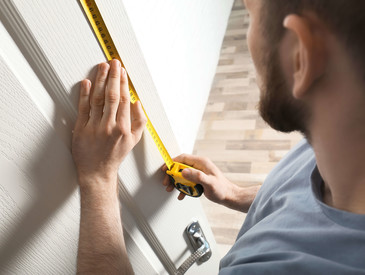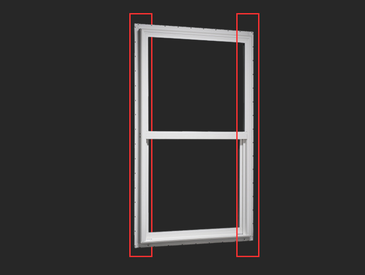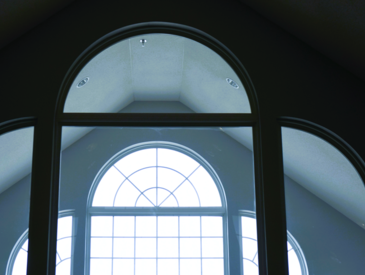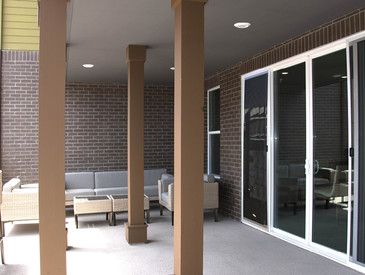Accurate measurement is the cornerstone of ensuring your new or replacement windows fit perfectly, function efficiently, and enhance the look and feel of your home. We always recommend consulting a professional window installation company to ensure the perfect fit. But homeowners should still understand how to measure windows, from the basics to specific considerations for different types of windows.
Understanding the basics of measuring windows
Accurate window measurements lay the foundation for a seamless installation process. Here's a breakdown of essential aspects to consider.
Different Window Types Require Different Measurements
Each window type, from single hung windows to casement styles, requires a specific approach to measurement. Single hung window sizes, for example, demand precise measurements of both the upper and lower sash, as they operate differently from their double-hung counterparts. Even when you’re measuring for standard size replacement windows, you should still measure each window space carefully. While “standard sizes” offer a baseline, individual homes might have variations due to construction differences or settling over time.
Know the Terminology
Even if you’re using a professional installation company, knowing the parts of a window can help you understand the process. Here are the key terms to know:
- Sash: The part of the window that holds the glass. There can be an upper and lower sash in a window style that opens vertically, or just one sash in styles that open outwards.
- Head: The very top part of the frame that touches the top of the sash. Sometimes called the first mullion.
- Sill: The bottom part of the frame that touches the bottom of the sash.
- Jambs: The vertical pieces on either side of the frame that touch the sides of the sash.
- Trim: The casing that goes around the window and fills the gaps between the frame and wall.
- Square: The traditional 90-degree angles of the edges of standard size replacement windows.
- Plumb: If a window is plumb, it’s vertically level, not tilting forward or backward in the frame.
- Level: A level window is horizontally level, not tilting side to side in the frame.
Think Beyond Window Sizes
It's not just about knowing how to measure window size. The type of window needs to match the room's look and meet its functional needs. For example, a room that gets warm might benefit from windows that can open wide for ventilation, while a sunny room might lend itself to a big picture window. Consider any challenges you had with your previous windows, and ask your window consultant how that might affect the type and size of window you choose.
How to measure for replacement windows
Learning how to measure windows is relatively easy compared to some home renovation projects. All you need is a tape measure to take three basic measurements:
- Width measurement: Start inside the window frame at three points: the top, middle, and bottom. Record the narrowest width to ensure the replacement window will fit.
- Height measurement: Measure the height inside the frame from the sill to the head at the left, middle, and right. Again, the smallest measurement is your guide.
- Depth measurement: Don't overlook the depth of the window opening, ensuring there's sufficient space for the new window, including its operation mechanisms.
Always measure windows from the exterior, as this is how replacement windows are sized. To make sure your windows have the proper fit and installation, consult a professional.
How to measure new construction windows
Measuring for new construction is essentially the same as measuring replacement windows. The only difference is that you're not limited by existing frames. Instead, measurements must account for the rough opening: the space within the framing that will hold the window, plus some extra for insulation, ensuring a tight fit against the elements.
How to measure windows for blinds and curtains
Measuring windows for blinds and curtains is simple. You only need to measure width and height, not depth. For curtains, you can choose how much overlap you want beyond the frame on the sides, top, and bottom. For example, you might allow for several inches of overlap if you want to block light. Just measure from left to right side, then from the top to bottom.
Blinds usually lie within the window trim, so more precise measurements are needed. You’ll still measure from left to right and top to bottom, but this time you’ll measure from the very top of the glass. Make sure the tape measure is flush against the top to find the correct size for blinds that you will need.
Getting the perfect window measurement
While it's possible to measure windows yourself, professionals are the real experts on how to measure windows – they do it every day. They’ll not only consider the dimensions but also the home's structure, potential frame adjustments, and specific needs. Plus, it costs you nothing, because it’s a standard part of a free consultation. Consult with a dealer today so you can move on to the next step: Transforming your home with brand new windows.































